I’m not one to gush over appliances, but when it comes to keeping my showers steamy and my dishes sparkling, State Water Heaters have earned a permanent spot in my home. After years of wrestling with lukewarm water and sky-high energy bills, I found a reliable, efficient solution with State.
Whether you’re upgrading an old unit or outfitting a new home, I’m convinced State’s lineup deserves your attention. In this article, I’ll share my personal experience, break down the pros and cons, offer maintenance tips, and compare State to other brands to help you decide.
My Journey With State Water Heaters
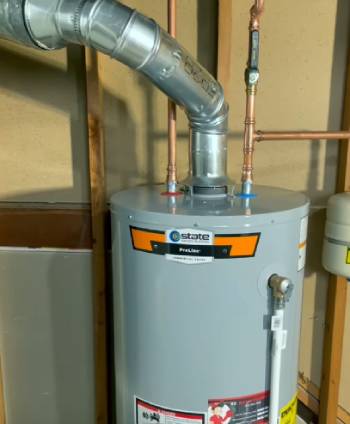
A few years back, my old water heater gave up the ghost right in the middle of a freezing winter.
I was left with icy showers and a flooded basement—talk about a nightmare!
Desperate for a replacement, I started researching and stumbled across State Water Heaters.
I’d heard good things about their durability, and since they’ve been in the game for over 70 years, I figured they knew a thing or two about hot water.
I settled on a 50-gallon gas model from their Select series, hoping it would live up to the hype.
Installation was a breeze with the help of a local plumber, who praised the unit’s straightforward design. From the moment I turned it on, I was impressed. The water heated up quickly, and I could finally take a shower without doing the cold-water shuffle.
Over the past three years, this heater has been a workhorse, handling everything from daily showers to laundry marathons for my family of four. I’ve even noticed a dip in my gas bill, which was a pleasant surprise.
The digital controls are a nice touch, letting me tweak the temperature with ease, and the unit’s compact design fits neatly in my utility closet.
That said, it hasn’t been perfect. I’ve had to deal with occasional sediment buildup, which required some maintenance to keep things running smoothly. But overall, my State water heater has been a reliable partner, delivering consistent hot water without any major hiccups.
It’s not just an appliance—it’s peace of mind, knowing I won’t be left shivering or mopping up a flood anytime soon. Now, let’s get into why State stands out, what could be better, and how to keep your unit in tip-top shape.
Why State Water Heaters Shine: The Pros
- Energy Efficiency That Saves You Money
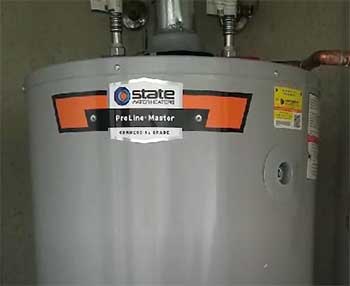
One of the first things I noticed after installing my State water heater was the drop in my utility bills.
Their models, especially the tankless and hybrid electric heat pump options, are designed with energy-saving features like high-efficiency burners and advanced insulation.
Many of their units are ENERGY STAR certified, which means they meet strict federal standards for efficiency.
For example, my gas model has a Uniform Energy Factor (UEF) of 0.62, which translates to less gas used to heat the same amount of water compared to my old clunker.
Over time, those savings add up, making State a smart choice for budget-conscious folks like me.
- Built to Last, Rain or Shine
I live in an area with hard water, so durability was a big concern when I was shopping for a water heater. State’s tanks are made of heavy-duty steel with corrosion-resistant Blue Diamond glass coating, which has held up beautifully against my mineral-heavy water.
The anode rod in my unit—a magnesium one—helps prevent rust, extending the tank’s life. State claims their heaters last 10–15 years with proper care, and some users report theirs chugging along for nearly 20. Knowing I won’t have to replace this thing anytime soon gives me serious peace of mind.
- Options for Every Home
Whether you’re in a cozy apartment or a sprawling house, State has a model for you. Their lineup includes gas, electric, tankless, and hybrid options, with tank sizes ranging from 30 to 80 gallons. I went with a 50-gallon gas model because it suits my family’s needs, but if you’re tight on space, their compact electric or tankless units are lifesavers.
They even offer specialized models for manufactured homes, which is a nice touch for folks in unique living situations. This variety means you’re almost guaranteed to find a unit that fits your lifestyle.
- Safety Features You Can Trust
As a parent, safety is non-negotiable. State water heaters come loaded with features like automatic shut-off valves, temperature controls, and flame arrestors to prevent accidents. My model has a pressure relief valve that gives me confidence it won’t overpressurize, even during heavy use.
These features aren’t just bells and whistles—they’re practical additions that make State a brand I feel good about having in my home.
- User-Friendly Design
I’m no tech wizard, but State’s digital displays and controls are easy to navigate. Adjusting the temperature is as simple as pressing a button, and some models even let you monitor performance via a smartphone app.
My gas model doesn’t have Wi-Fi, but the manual controls are intuitive enough that I’ve never felt lost. Plus, the units are designed for straightforward installation, which saved me some bucks on labor costs.
The Not-So-Good Parts of State Water Heaters
- Higher Upfront Cost
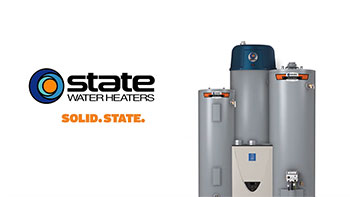
Let’s be real—State water heaters aren’t the cheapest option on the market.
My 50-gallon gas model set me back about $1,250, including installation, which was pricier than some budget brands I considered.
The tankless and hybrid models are even steeper, sometimes costing twice as much as a basic tank unit.
While the energy savings have helped offset the initial hit, it’s still a chunk of change upfront. If you’re on a tight budget, this might give you pause, though I’d argue the long-term value is worth it.
- Availability Can Be Tricky
Finding a State water heater wasn’t as easy as I expected. Unlike some brands you can grab at big-box stores like Home Depot, State units are mostly sold through authorized dealers or plumbers. In my rural area, I had to order through a local contractor, which added a bit of hassle.
If you’re someone who likes the convenience of walking into a store and walking out with a heater, this could be a drawback. That said, my plumber was great about sourcing the unit quickly.
- Maintenance Is a Must
I learned the hard way that State water heaters, like any tank model, need regular upkeep to stay efficient. My first year, I ignored the manual’s advice to flush the tank, and I noticed a slight drop in performance due to sediment buildup.
Hard water, like what I have, can make this worse, requiring annual draining and occasional anode rod checks. It’s not a dealbreaker, but if you’re not into DIY maintenance or paying a plumber $100–$200 a year, it’s something to consider.
- Warranty Woes
State offers solid warranties—my model came with a 12-year tank and parts warranty and a 3-year labor warranty. But here’s the catch: some users, including a few I found on forums, reported issues with warranty claims.
For example, one homeowner mentioned their State Select unit leaked after five years, and getting a replacement was a headache due to strict documentation requirements. My experience has been fine so far, but it’s worth noting that warranty support can vary depending on your plumber and the issue.
Maintenance Tips To Keep Your State Water Heater Running Like New
- Flush the Tank Annually
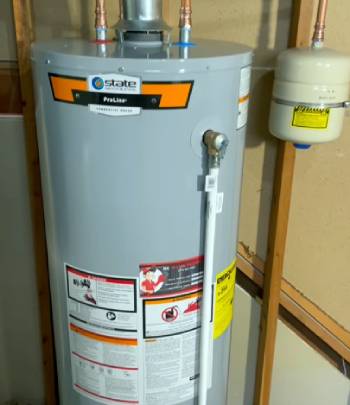
Sediment buildup is the enemy of any tank water heater, and my State unit is no exception.
To keep it running efficiently, I flush the tank once a year.
Here’s how I do it: I turn off the power or gas supply, shut off the cold-water inlet, and connect a hose to the drain valve at the bottom of the tank.
Then, I open the valve and let the water run until it’s clear.
If you’ve got hard water like me, you might need to do this twice a year.
It takes about 30 minutes and saves you from efficiency losses or costly repairs.
- Check the Anode Rod
The anode rod is your tank’s unsung hero, sacrificing itself to prevent rust. I check mine every couple of years by turning off the water and power, then using a wrench to remove the rod from the top of the tank.
If it’s worn down to less than 6 inches or looks like a corroded mess, it’s time to replace it. My State unit came with a magnesium rod, but you can upgrade to an aluminum or powered anode for longer life. This simple check can add years to your heater’s lifespan.
- Inspect the Pressure Relief Valve
I learned from my plumber that a faulty pressure relief valve can cause serious issues, like leaks or even explosions. Once a year, I test mine by lifting the valve’s lever to ensure it releases water and then closes properly. If it’s rusty or doesn’t work, I call a pro to replace it.
This takes five minutes and gives me peace of mind that my State heater is safe.
- Monitor for Leaks and Corrosion
Early in my ownership, I noticed a small puddle near my heater, which turned out to be a loose connection. Now, I routinely check for leaks, rust, or corrosion around the tank, fittings, and pipes.
If you spot any, don’t wait—call a plumber to fix it before it becomes a bigger problem. Keeping an eye on your unit can prevent disasters like my old heater’s basement flood.
- Schedule Professional Tune-Ups
While I handle basic maintenance myself, I hire a plumber every two years for a full inspection. They check the burner (for gas models), heating elements (for electric), and overall system performance.
This costs me about $150, but it’s worth it to catch issues early and keep my warranty valid. State’s manual often requires annual checkups to maintain coverage, so don’t skip this step.
How State Stacks Up Against the Competition?
When I was hunting for a water heater, I weighed State against other solid contenders like American Standard, Reliance, and Lochinvar. Each brand brings something unique to the table, but here’s how State holds up in a head-to-head comparison, based on my research and experience.
- State Vs. American Standard
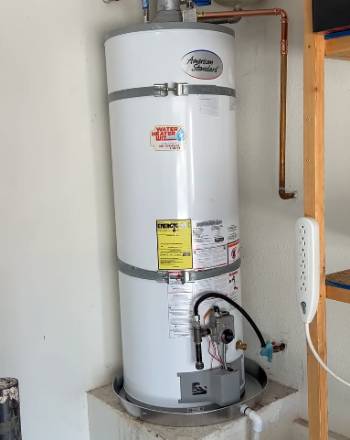
American Standard has a reputation for quality, and their water heaters are no exception.
Their 50-gallon gas models, like the G-50-T, are priced around $1,000–$1,200, slightly cheaper than my State Select unit at $1,250.
American Standard’s units boast a high-efficiency burner and a self-cleaning system to reduce sediment, which is great for hard-water areas like mine.
However, their warranty tops out at 10 years, compared to State’s 12-year tank coverage.
State also offers more variety, including tankless and hybrid models, while American Standard leans heavily on traditional tank units.
If you want a budget-friendly tank heater with solid performance, American Standard is a strong contender, but State’s longer warranty and broader lineup give it an edge for me.
- State Vs. Reliance
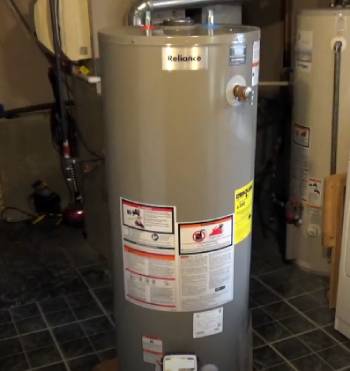
Reliance is the budget king, with 50-gallon gas models often retailing for $800–$1,000, making them noticeably cheaper than State.
I considered their Sta-Kleen series for its low price and decent durability, but the energy efficiency didn’t impress me—most models have a UEF around 0.58, compared to my State’s 0.62.
Reliance’s warranties are typically 6–8 years, shorter than State’s, and their units lack advanced features like digital controls or smartphone connectivity.
For a no-frills option, Reliance gets the job done, especially if cost is your main concern. But for me, State’s energy savings and user-friendly design justify the extra upfront cost.
- State Vs. Lochinvar
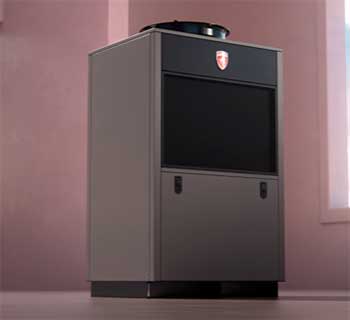
Lochinvar is a premium brand, often used in commercial settings, but their residential water heaters are worth a look.
Their Shield series tankless models are compact and boast UEFs as high as 0.95, outpacing State’s tankless options (around 0.90).
However, Lochinvar’s tankless units start at $2,000, nearly double State’s tankless price.
Lochinvar’s tank models are also pricier, with 50-gallon units costing $1,500 or more. Their warranties match State’s at 12 years for tanks, but their focus on high-end tech means more maintenance, like annual descaling for tankless units.
If you’re after top-tier efficiency and don’t mind the price, Lochinvar shines, but State’s balance of cost, reliability, and variety won me over for home use.
In the end, State strikes a sweet spot. American Standard and Reliance are great for budget shoppers, but they skimp on warranties and features. Lochinvar offers premium efficiency but at a steep cost. State’s mix of durability, energy savings, and model options makes it versatile enough for most homes, including mine.
Frequently Asked Questions (FAQ)
State Water Heaters are manufactured by State Industries, a company with over 70 years of experience in water heating. Since 2001, State has been owned by A.O. Smith, a leading name in the industry. This partnership means State benefits from A.O. Smith’s engineering expertise and shared technologies, like the Blue Diamond glass coating, ensuring high-quality, reliable products.
Not exactly, but they’re closely related. A.O. Smith owns State Industries, so many State water heaters share components and technology with A.O. Smith models. However, State is marketed as a separate brand with its own product lines, often at a lower price point. Think of State as A.O. Smith’s more budget-friendly cousin, delivering similar quality with slightly fewer premium features.
Yes, many State water heaters are designed for energy efficiency. Their tankless and hybrid electric heat pump models are ENERGY STAR certified, boasting high Uniform Energy Factors (UEF) that reduce energy use. Even their gas and electric tank models, like my 50-gallon Select unit, feature efficient burners and insulation to cut down on utility costs. Regular maintenance, like flushing the tank, helps maintain that efficiency over time.
Why State Water Heaters Are Worth Your Investment?
After three years with my State water heater, I can confidently say it’s a game-changer. From energy savings to rock-solid durability, it’s kept my home comfortable without the headaches of my old unit.
Sure, it’s not perfect—upfront costs and maintenance needs are real—but the reliability and variety make it a standout. If you’re in the market for a water heater that delivers hot water day in and day out, State’s got your back.
Trust me, you won’t regret giving it a shot.
